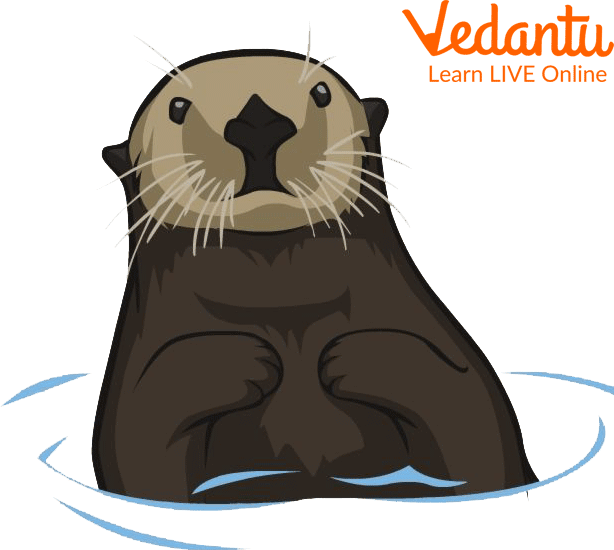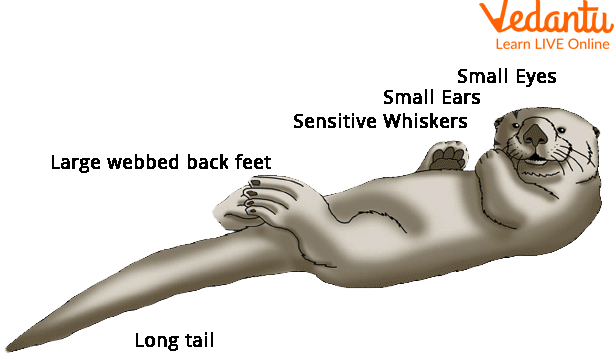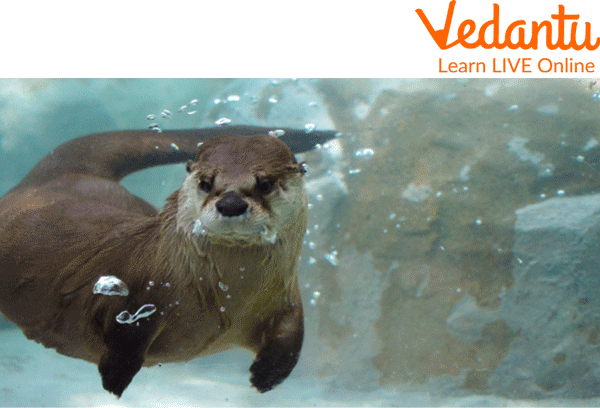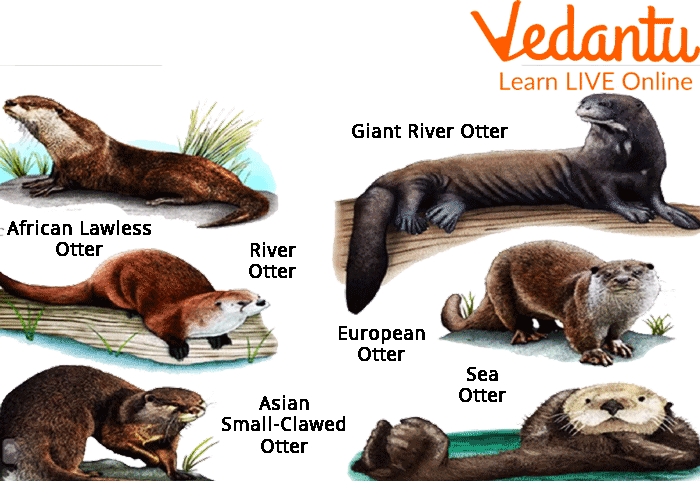




Why Are Otters Important in Nature?
Kids, could you name an aquatic animal that is adorable and friendly, they float in the water, and they continuously groom themselves. They even hold hands when they sleep! I gave you a lot of clues; could you attempt and name that oceanic animal?
Well, numerous marine creatures on our planet are charming and which float on water, nonetheless, the one in particular which holds their hands when they rest in the ocean is the otter. Otters are carnivores. Scientific name of Otter is Lutrinae. In this article, we are going to explore some fun otter facts for kids that will wow you. We will likewise be discussed in detail about otters and the conservation and classification of Otters.
What is an Otter?
Warm-blooded creatures known as otters belong to the weasel or mustelid family and live in and around water. They are fun-loving creatures and they love sliding down riverbanks and in snow. Like other members of this family, they have very thick fur. In fact, at 850,000 to 1 million hairs per square inch, sea otters have the densest fur of any mammal.

Sea Otter
All About Otter: Physical characteristics

Physical Features of an Otter
Height and Weight: Otters belong to the weasel family. Otters have a slim body shape, a long neck, and short legs. They are typically 3 to 5 feet (1 to 1.5 metres) long and weigh somewhere between 6.5 and 60 pounds (3 and 27 kilograms). The sea otter is the heaviest. It weighs pretty much 90 pounds (41 kilograms).
Furr: Ocean otters are brown in fur that eventually lightens up with age. Their jacket consists of two layers: A dim undercoat and a layer of longer, lighter-shaded watch hairs, which trap air close to the skin to keep it dry. Ocean otters don't have any protecting fat, so their fur helps them control the temperature in their bodies.
Facial Elements: Ocean otter's face shapes are round with short noses, and round moulded eyes and ears. They have long bristles which help them track down food. Their teeth consist of four lower narrow-edged teeth called incisors which is uncommon.
Forelegs: The forelegs are webbed and seem to be flippers. The last digit is the longest, which makes swimming on its back simple, yet walking on the earth weirdly. The ocean otter's tail is extremely solid, making them control and swim. They catch their prey easily using the four incisors on their lower jaw.
Pockets: Under each lower arm are loose pockets of free skin. The ocean otter utilises these pockets to store the food it has collected. It likewise stores the most loved rocks which they use to hunt down its prey. The ocean otter can pause its breathing for as long as five minutes submerged.
Otter Habitat

European Otter
Otters are seen practically all around the world and in many wet territories, like freshwater streams, lakes, seas, shorelines, and bogs. Most otters live in caves built by different wildlife creatures, for example, beavers that dove into the ground that have multiple channels and dry internal loads. The ocean otter, nonetheless, rarely comes on the ground, as per the San Diego Zoo. Ocean Otters are tracked down in two regions: the Pacific shores of Russia and The Frozen North, and along the focal California coast. They live in seaward timberlands of goliath kelp, as per the Creature Variety Web. They eat, rest, and groom themself on the water's surface. This was information regarding otter habitats.
Classification of Otters

Classifying Multiple Species of Otter
Otter is a carnivorous mammal well-evolved creature in a part of the weasel family called Lutrinae. There are 13 types of otters found by and large around the world. Some otter species live entirely in the water while others are land and water-based species. Four of the main otter species include the European otter, the North American stream otter, the Ocean otter, and the Giant otter. Otter species range in size from the smallest Oriental small-clawed otter at 0.6 m (2 ft) and 1 kg (2.2 lb). Through to the huge giant otter and sea otters who can arrive at 1.8 m (5.9 ft) and 45 kg (99.2 lb).
Conservation of Otters: What is Being done to Save Them?
The Global Association for Preservation of Nature (IUCN) records a few types of otters as either weak or endangered (about to finish). In the US North American waterway otters populations are stable and In many countries, it is unstable Because hunters trap them for trading their fur. The primary harm to different otters is the destruction of their homes and wetlands. Weighty metals and pollutants, for example, mercury is harmful to the otter tissues and can even affect their survival and reproduction.
However, Ocean otters have been safeguarded by the Worldwide Fur Seal Deal starting around 1911. This arrangement between the U.SRussia, Japan, and England was laid out to boycott huge scope business hunting ocean otters and fur seals to promote their population growth. From that point forward, ocean otter numbers have expanded.
Summary
From this article, we came to know that otters are fun-loving creatures that belong to the weasel or mustelid family. They have in total 13 species found almost in every continent except Australia. They are widely known for their densest fur and holding their hands while sleeping differentiates them from other animals. Here we also learned some physical characteristics of the otter including its fur, legs, and facial features, and further, we got to know places where they are found and finally the initiative by the world for its conservation. If you have any other queries regarding otters ask in the comments.
FAQs on Otter Facts Every Student Should Know
1. How do baby otters develop?
Stream Otters bring forth two to four puppies in the spring, commonly from Spring through May. Puppies can swim at seven weeks old and are acquainted with strong food at around nine weeks old. In pre-winter, the puppies leave their mom to lay out their domains. Waterway Otters can live to be 8 to 9 years in nature.
2. Are otters intelligent creatures?
Waterway Otters are extremely wise and curious. They have advanced hearing and feelings of smell. They go through most of their day hunting their prey and investigating their home reach. They are constantly active the entire year however will quite often be more asleep and unproductive in cold regions.
3. Why do otters hold hands while they sleep?
Ocean otters are often seen holding hands so they don't float apart and lose their mates while resting in the water. Otters are afraid of losing their mate to one more male while dozing. Holding hands protects them from hunters as they bunch away from land.









